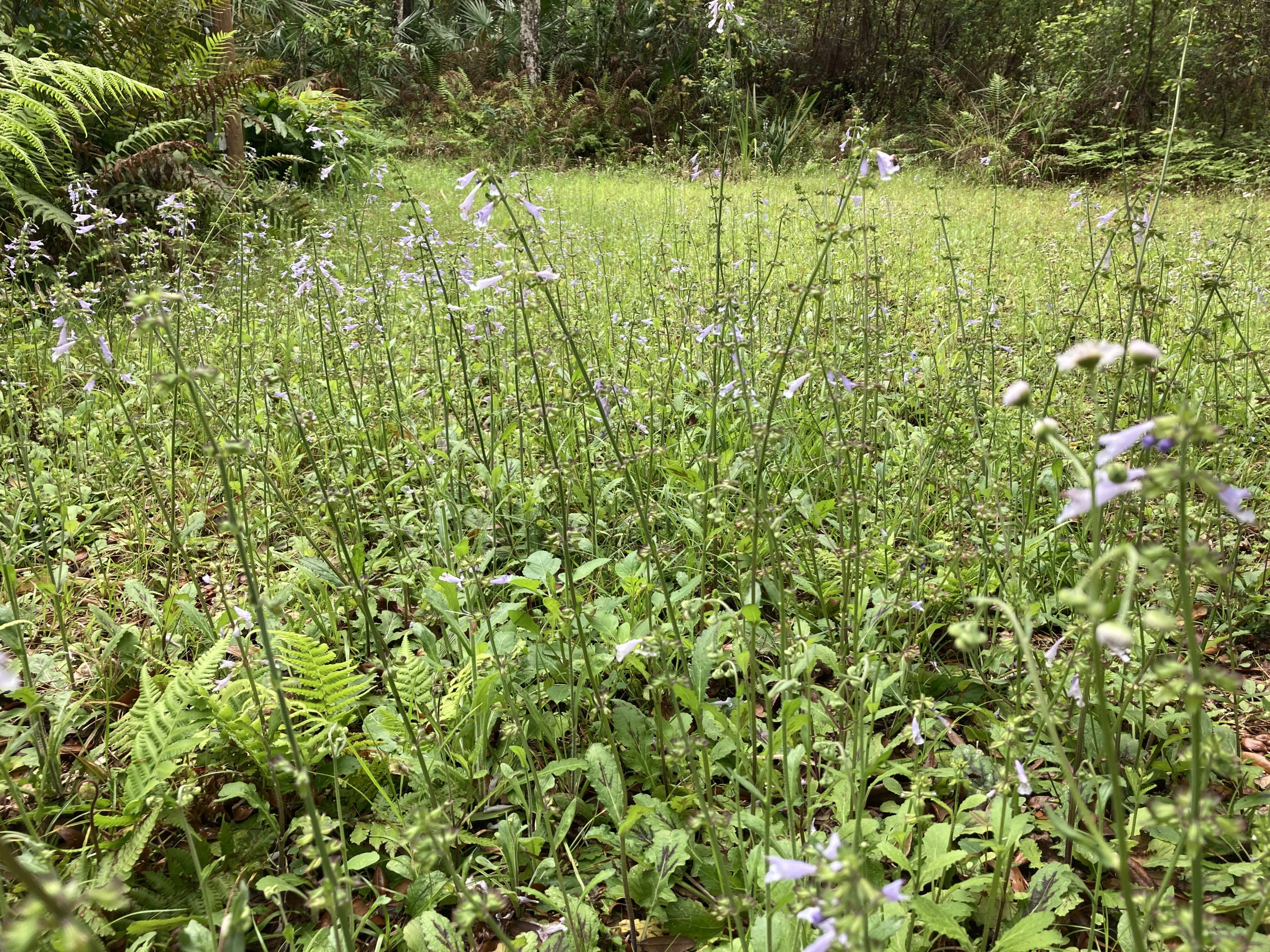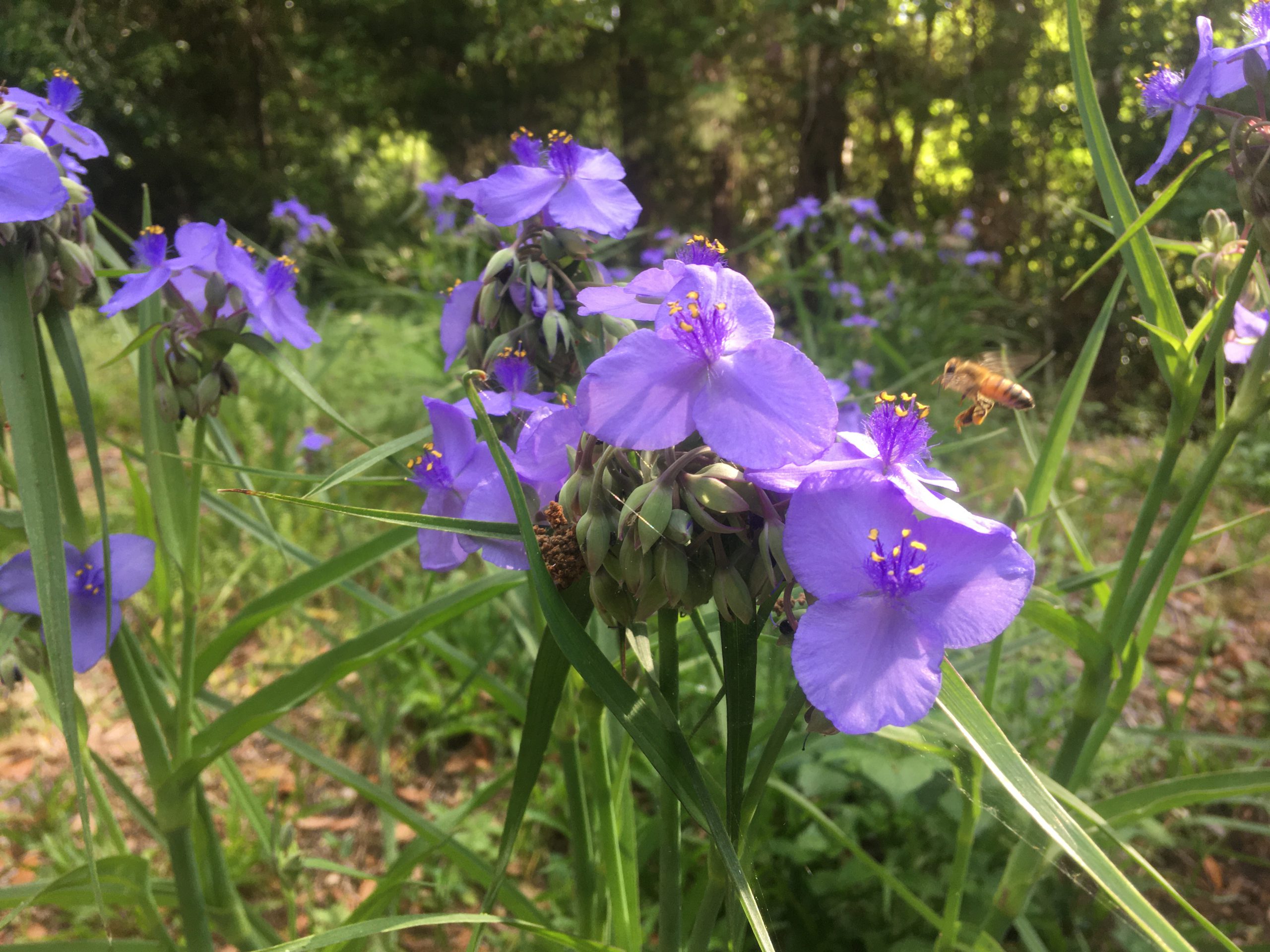The Florida-Friendly Landscaping program is full of progressive ideas on how to manage landscapes with less water, less pesticides, and more benefits to wildlife. One of these strategies is rethinking our lawns. With the increasing government regulations on fertilizer due to poor water quality leading to impaired water bodies, we need to really think our lawns. Do we want perfect green lawns or do we care more about water quality? One way to reduce the need for fertilizer in your lawn is to plant alternatives to turfgrass. For beginners, check out our Alternative Lawns blog.
Most of the alternative lawn species such as sunshine mimosa, perennial peanut, and frogfruit are mowable and can take some foot traffic. Another option is groundcovers that replace the lawn but are not generally mowed. These include Asiatic jasmine (that is usually trimmed), lirope, ferns, and twinflower.
How to Manage a Wildflower Lawn
Wildflower lawns are a more advanced alternative lawn option and mentioned briefly at the end of the blog. They require specialized management based on the plant’s life cycle. Wildflower lawns can still be mowed, but only at certain times of the year. For best results, no mowing is done between January 1 and May 1. This gives the wildflowers time to live their full life cycle. Here’s how it works; the wildflowers grow in the spring and flower. After the flowers, the plant goes to seed. It is critical to let the plant complete its life cycle and let the seed heads mature and release the seed back into the ground/lawn before mowing. This ensures a strong seed bank to allow the wildflowers to keep coming up year after year.

Species Selection for Wildflower Lawns
Species selection is also critical. Select spring wildflowers that will grow and bloom during the no mow time period and can tolerate being mowed the rest of the year. Some species that I have seen success with include violas, lyre-leaved sage, oakleaf fleabane, elephants foot, white clover, spiderwort, and pony’s foot. In addition, these species can be mixed with other alternative lawn species such as the sunshine mimosa or perennial peanut.

Is this OK with my HOA?
Probably not in the front yard, as many HOA’s have a maximum lawn height and you would have to cut it before the plants could flower and seed. But this could be an option for the side or backyard. This is a better option for people who do not live in HOA’s and they can allow for their yard to become a wildflower meadow for a few months in the spring and no one will care.
Want to learn more? Check out our Extension programs by following us on Instagram www.instagram.com/oc_extension/, liking our Garden Florida! Facebook page www.facebook.com/GardenFlorida/, and visit our website https://sfyl.ifas.ufl.edu/orange/home-lawns-landscapes-and-gardens/florida-friendly-landscaping/.
 0
0
